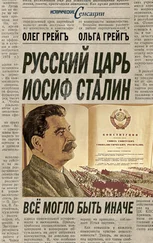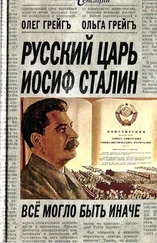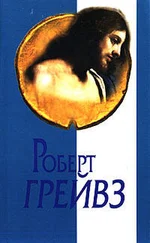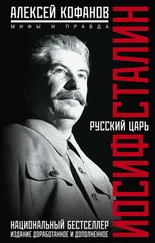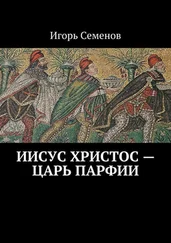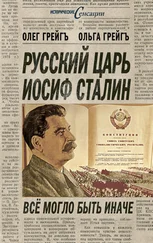Hans Kung, Islam: Past, Present, and Future (Oxford, UK: Oneworld Publications, 2007), p. 44.
John Toland, Nazarenus: Or Jewish, Gentile, or Mahometan Christianity (London: 1718), pp. iv – vi. Полный текст доступен по адресу: Archive.org, оцифрован Принстонской богословской семинарией. См. также: F.Stanley Jones, The Rediscovery of Jewish Christianity: From Toland to Baur, Society of Biblical Literature (Leiden, the Netherlands: Koninklij ke Brill, 2012).
Toland, Nazarenus , p. 84–85.
Упомянув несколько возможных источников «магометанских учений», Стабб заключал: «Я же, со своей стороны, полагаю, что [Магомет] обратился в веру христиан иудействующих и по образцу их учения создал собственное». Henry Stubbe, An Account of the Rise and Progress of Mahometanism (London: Luzac and Company, 1911 reprint), p. 145. Книга написана и впервые опубликована в 1671 году.
Adolf von Harnack, “Islam,” from an excerpt translated by Markus Gross from Lehrbuch der Dogmengeschicte (Tübingen, Germany: 1909), published in Christmas in the Koran, ed. Ibn Warraq (Amherst, NY: Prometheus Books, 2014), p. 246.
Там же.
Hans-Joachim Schoeps, Jewish Christianity: Factional Disputes in the Early Church, trans. Douglas R.A.Hare (Philadelphia: Fortress Press, 1969), p. 140. Оригинальное немецкое издание A.Francke (Bern: AG Verlag, 1964).
Shlomo Pines, “The Jewish Christians of the Early Centuries of Christianity According to a New Source,” Proceedings of the Israel Academy of Sciences and Humanities 2, no. 13 (1966): 1–74.
См.: S.M.Stern, “New Light on Judaeo-Christianity?” Encounter 28, no. 5 (May 1967): 53–57; and S.Stern, “ ‘Abd al-Jabbàr’s Account of How Christ’s Religion Was Falsifi ed by the Adoption of Roman Customs,” Journal of Theological Studies 19, no. 1 (April 1968): 128–185. Подробную и беспристрастную оценку спора между Пинесом и Штерном, а также самой книги, его вызвавшей – сочинения средневекового мусульманского писателя Аль-Джаббара – см. в: Gabriel Said Reynolds, A Muslim Theologian in the Sectarian Milieu: Abd al-Jabbar and the Critique of Christian Origins (Leiden, the Netherlands: Brill, 2004).
Статья опубликована на английском языке в Koranic Allusions: The Biblical, Qumranian, and Pre-Islamic Background to the Koran, ed. Ibn Warraq (Amherst, NY: Prometheus Books, 2013).
См.: François de Blois– Naṣrānī(Nαζωραιος) and ḥanīf (ἐθνικός): Studies on the Religious Vocabulary of Christianity and of Islam,” Bulletin of the School of Oriental and African Studies 65 (2002): 1–30; Edouard M.Gallez, Le messie et son prophète: Aux origines de l’Islam, vol. 1: De Qumrân à Muhammad, 2nd ed. (Paris: Éditions de Paris, 2005); Joseph Azzi, The Priest and the Prophet: The Christian Priest, Waraqa Ibn Nawfal’s, Profound Infl uence Upon Muhammad, the Prophet of Islam (The Pen Publishers, 2005); and Joachim Gnilka, Die Nazarener und der Koran: Eine Spurensuche (Freiburg, Germany: Herder, 2007). Выдержка из: Sidney H.Griffi th, The Bible in Arabic: The Scriptures of the “People of the Book” in the Language of Islam (Princeton, NJ: Princeton University Press, 2013), and in iBooks.
См.: Patricia Crone, “Islam, Judeo-Christianity, and Byzantine Iconoclasm,” Jerusalem Studies in Arabic and Islam (Part Two) (1980): 59–95.
de Blois, Naṣrānī (Nαζωραιος) and ḥanīf (ἐθνικός),” с. 25.
Hans Küng, Islam: Past, Present, and Future (Oxford, UK: Oneworld Publications, 2007), p. 496.
«Климентовы Гомилии», гомилия XVI, глава XIX «Неразумное противостояние Петру», цит. по: James Donaldson and Alexander Roberts, Ante-Nicene Fathers, Vol. VIII: e Twelve Patriarchs, Excerpts and Epistles, e Clementina, Apocrypha, Decretals, Memoirs of Edessa and Syriac Documents, Remains of the First Ages, Amazon Digital Services LLC, 2012 (впервые опубликована: Edinburgh, UK: T. & T. Clark, между 1867 и 1873), p. 31.
Коран 2:163.
Gerard P.Luttikhuizen, The Revelation of Elchasai: Investigations into the Evidence for a Mesopotamian Jewish Apocalypse of the Second Century and Its Reception by Judeo-Christian Propagandists (Tübingen, Germany: Mohr Siebeck, 1985), p. 3, 12, 27–28.
Коран 3:49.
Patricia Crone, “Jewish Christianity and the Qurʼān (Part One),” Journal of Near Eastern Studies 74, no. 2 (October 2015): 230.
Там же. Далее Крон поясняет: «Эта [концепция Корана] удивительным образом совпадает со знаменитым отрывком в иудео-христианском разделе «Узнаваний» Псевдо-Климента (составленных, по-видимому, в середине IV века), где нам говорят, что единственная разница между авторами и «теми из нашего народа, кто не верует», или, в латинском переводе, «между нами, верующими в Иисуса, и неверующими иудеями», следующая: «мы верим, что Иисус – пророк, предсказанный Моисеем, и вечный Христос, а неверующие иудеи – нет. Не так-то легко вообразить себе, что халкидонские (мелкиты), западно-сирийские (монофизиты или яковиты) или восточно-сирийские (несториане) христиане будут описывать Иисуса как израильского пророка, и параллели такому описанию в мейнстримовом христианстве мне не известны».
В “Jewish Christianity and the Qurʼān (Part One)” Крон цитирует только «Узнавания» Псевдо-Климента.
Там же, p. 230.
Там же, p. 237.
Стоит отметить, что исламская традиция также превозносит Моисея как «Калим Аллах», «Собеседника Бога», наряду с пятью другими «великими пророками»: Адамом, «Избранным Бога», Ноем, «Пророком Бога», Авраамом, «Другом Бога», Иисусом, «Духом Бога», и Мухаммадом, «Апостолом Бога».
Читать дальше
Конец ознакомительного отрывка
Купить книгу



